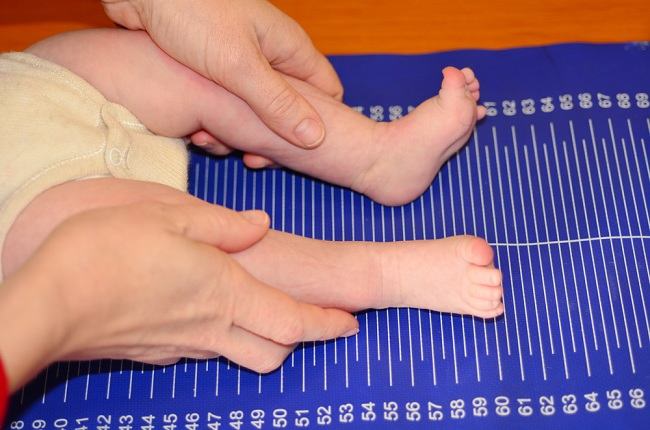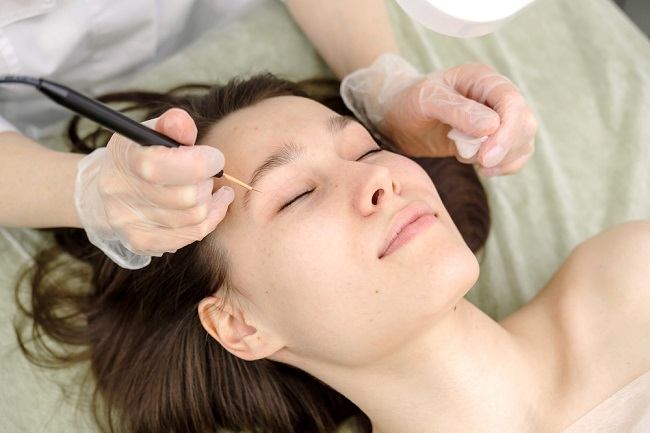Orthognathic surgery or jaw surgery is an action to correct abnormalities in the position of the jaw and teeth. This surgery is often performed as part of plastic surgery to enhance facial appearance.
In general, jaw surgery is performed by cutting the jawbone and turning it into the correct position. Then, a special device will be placed to keep the jawbone in position.

Jaw surgery can only be done after the jaw is fully grown, namely after the age of 14 years in women and after 17 years in men.
Purpose and Indications for Jaw Surgery
Apart from aesthetic reasons, jaw surgery is actually performed by a plastic surgeon or an oral surgeon to treat the following conditions:
- Broken teeth.
- Problems with biting, chewing and speaking
- Difficulty breathing and snoring due to sleep apnea.
- Pain due to disorders of the jaw joint.
- Injury or birth defects of the face.
- Mouth that cannot close completely.
- Asymmetrical face shape, such as a small chin, the upper teeth are not aligned with the lower teeth or vice versa, and the teeth protrude inward.
Precautions Before Performing Jaw Surgery
Jaw surgery is not recommended for someone whose jaw is still in its infancy, ie under 17 years old in men and under 14 years old in women.
Tell your doctor if you have a blood clotting disorder or are taking blood-thinning medications before surgery, as jaw surgery can cause bleeding.
In addition, first consult with the surgeon, especially regarding the following:
- Medical conditions suffered, especially if there are eye problems.
- Medications being taken, including supplements and herbal remedies.
- Have a habit of smoking, drinking alcohol, and drug abuse.
- Previously performed operations.
Prior to surgery, the doctor will explain the success rate of jaw surgery and the complications that may occur, including the possibility of returning the jaw to the position it was before surgery.
Preparation Before Jaw Surgery
Prior to jaw surgery, the doctor will take X-rays of the teeth and jaw area to see the shape of the teeth and jaw to be operated on. Furthermore, orthodontist specialist dentists can place braces on patients in advance about 12-18 months before surgery.
Installation of these braces can not improve the shape of the patient's jaw but only aims to straighten the teeth before surgery.
Jaw Surgery Procedures and Procedures
During the procedure in the operating room, the patient will not feel anything because he is given general anesthesia. After the anesthetic works and the patient is asleep, the doctor will make an incision in the mouth of the upper and lower jaw area. The following is the process of jaw surgery that will be performed:
- The incision inside the mouth can be done vertically or horizontally, depending on which jaw is being operated on.
- The plastic surgeon or oral surgeon will cut the jaw or shift the jaw to correct the shape or position of the jaw.
- After the jaw is in the correct position, the doctor can use a special tool (pen) so that the jaw position does not change again.
- In some cases, the doctor may take a piece of bone from the pelvis, leg, or ribs and then graft it into the jawbone.
The surgical incision will not leave a scar on the face because the incision is made on the inside of the mouth. However, sometimes a small incision will need to be made on the outside of the mouth.
Recovery After Jaw Surgery
The duration of recovery after surgery varies, depending on the age and condition of the patient. However, generally the recovery period can take up to 2-3 months after surgery. The following are things that happen during the recovery period, along with the do's and don'ts:
Jaw surgery recovery period in hospital
After the operation is completed and the effects of the anesthetic wear off, the patient will regain consciousness. Patients will feel drowsiness, pain, and tingling around the mouth and face. This tingling sensation is felt by the patient as a side effect of the anesthetic to protect the nerves around the jaw during surgery. The jaw in the surgical area will also experience swelling.
Patients undergoing jaw surgery will need to stay in the hospital for at least three days to one week after surgery. During hospitalization, the doctor will carry out regular check-ups to monitor the patient's condition.
Jaw surgery recovery period after returning home
After returning from the hospital, patients were asked to pay more attention to dental and oral hygiene, and to eat foods that were soft and easy to swallow. The doctor will also give pain medication, and ask the patient not to smoke and do strenuous activities for at least 3 months after surgery.
The recovery period after jaw surgery varies, depending on the patient's condition. Patients who undergo jaw surgery will generally be able to carry out normal activities about one month after surgery. However, patients need to have regular check-ups with their doctor for at least 6 months after surgery.
After surgery, braces and dental retainers will be used for several years to improve the shape of the jaw and keep the jaw position unchanged.
Jaw Surgery Complications and Side Effects
Jaw surgery tends to be safe and does not cause complications. However, in some cases, patients need to undergo further surgery or treatment of the affected tooth root. In addition, patients may also experience the following risks after jaw surgery:
- Bleeding
- Surgical wound infection
- Swelling
- Nerve injury
- Cracked jaw
- The jaw returns to its original position
- Pain in the jaw joint









